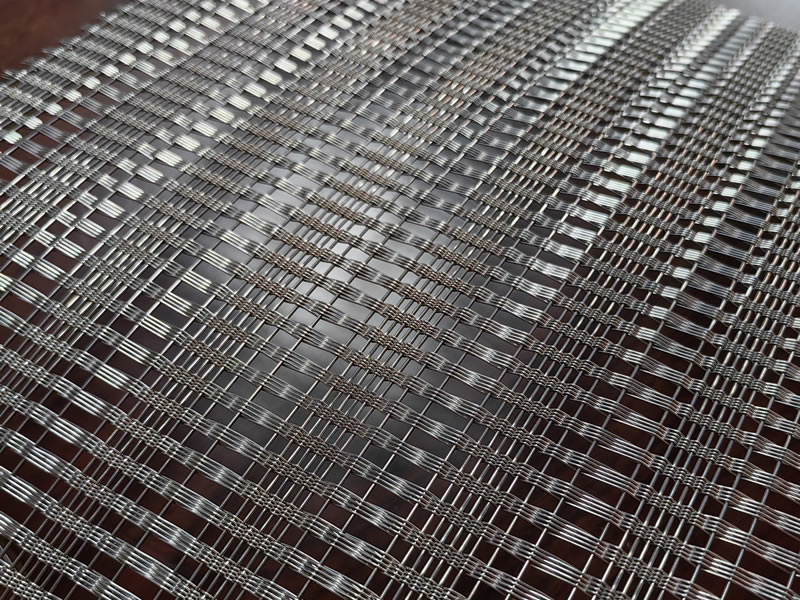Laminated Glass Metal Mesh offers an ideal blend of art and functionality by combining metal mesh curtains and glass. This fusion delivers a unique touch of sophistication and elegance. Wired glass is well-suited for upscale buildings, KTV lounges, gourmet restaurants, office complexes, and hotels, providing visual screening while creating a stunning interplay of light and shadows. This material infuses an air of luxury and modernity into any space, enhancing aesthetics while fulfilling practical requirements for safety and design flexibility.

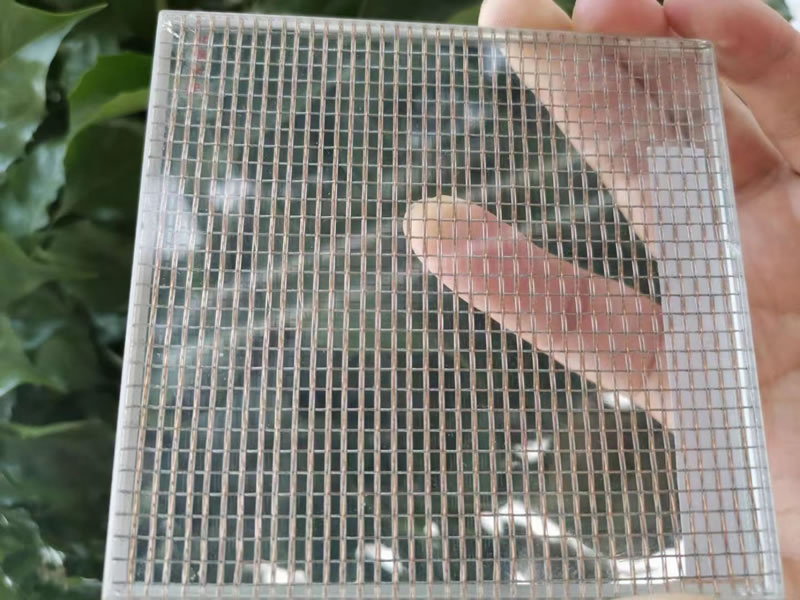
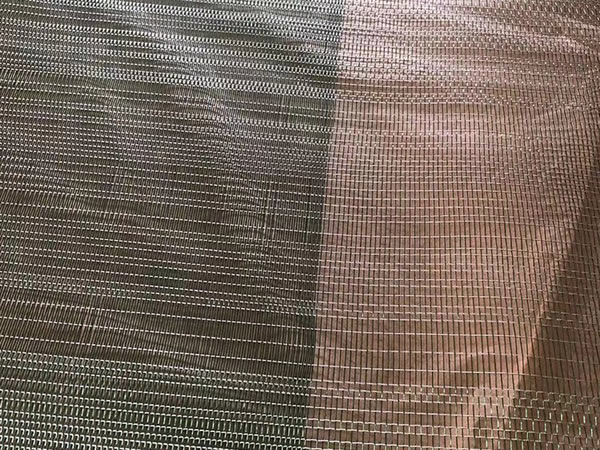
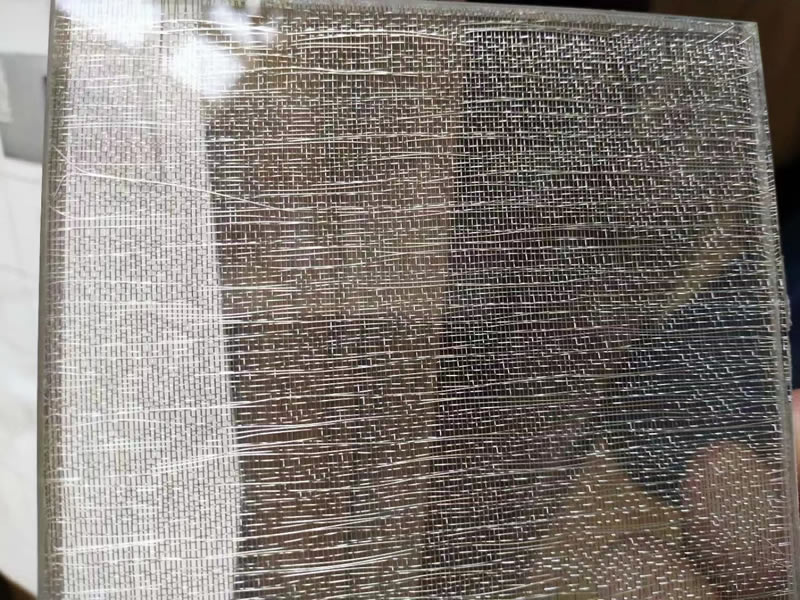
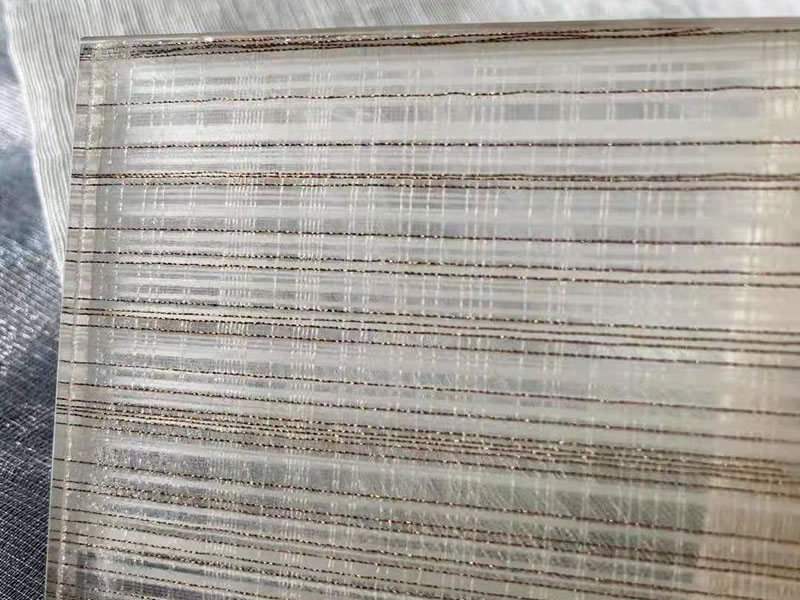
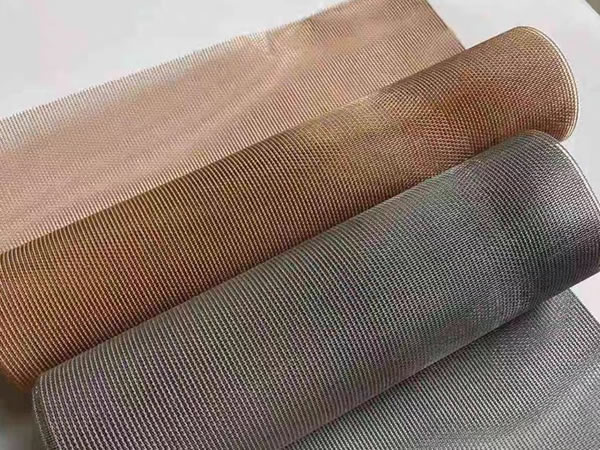
Color of Inter-layer Metal Mesh
The inter-layer metal mesh used in Laminated Glass Metal Mesh is available in a range of colors to suit diverse architectural needs. The standard color options include:
- Silver: Offers a clean, neutral appearance ideal for modern, minimalist designs.
- Golden: Adds a touch of luxury and warmth, perfect for high-end interior projects.
- Red: Makes a bold statement and introduces vibrancy to spaces like entertainment venues.
- Purple: Provides a sophisticated, creative touch suitable for artistic or upscale interiors.
- Blue: Brings a sense of calm and is perfect for settings like offices and hotels.
- Green: Offers a natural, refreshing feel to create welcoming environments in public spaces.
- Bronze: Delivers a classic, timeless look, blending well with earthy or metallic color schemes.
- Gray: Ensures versatility, adapting seamlessly to both contemporary and traditional architectural styles.
Glass Types for Laminated Glass Metal Mesh:
- Common Laminated Glass:
Standard laminated glass provides fundamental safety features by holding together even if shattered. It typically consists of two or more glass panes bonded with a clear or colored interlayer. Common thicknesses range from 6 mm to 12 mm. - Tempered Laminated Glass:
Combines the impact resistance of tempered glass with the safety benefits of laminated glass. Its thickness can range from 8 mm to 15 mm, providing strong structural integrity while offering shatter resistance and improved durability. - Coated Laminated Glass:
Features an additional coating layer to control solar heat gain, glare, or UV radiation. This glass type is often used in facades and curtain walls, with thicknesses between 6 mm and 12 mm. - Silkscreen Laminated Glass:
Incorporates printed designs or patterns through a silkscreen process before lamination. The resulting decorative glass typically ranges in thickness from 8 mm to 15 mm and is suitable for partitions and architectural accents. - Bulletproof Laminated Glass:
Designed to withstand high-impact forces and ballistic penetration. Bulletproof laminated glass is often customized between 20 mm and 50 mm thick, depending on the level of security required. - Fireproof Laminated Glass:
Offers resistance against fire for a specified duration while maintaining transparency. Common thicknesses range from 12 mm to 30 mm, providing essential safety features for critical infrastructure.
Glass Thickness
- 12 mm Thickness:
This thickness provides fundamental safety and strength, commonly used in partitions, decorative panels, and interior applications. It allows for efficient light transmission while ensuring stability. - 14 mm Thickness:
Slightly thicker than 12 mm, this option adds more rigidity and impact resistance. It’s ideal for moderate structural needs, such as railing infills or divider walls. - 16 mm Thickness:
At 16 mm, the laminated glass offers enhanced security and acoustic insulation. It can be used for larger panels or where additional strength is necessary, like for facades or balustrades. - 20 mm Thickness:
This robust thickness provides superior durability and protection, suitable for high-impact environments. It’s often chosen for structural glazing, storefronts, and public building partitions.
Customized Thickness
Beyond these standard thicknesses, customized options can cater to specific requirements, ranging from 10 mm up to 30 mm or more. These customizations ensure that the glass meets the structural and aesthetic needs of various projects.
PVB or EVA Thickness
- 0.38 mm Thickness:
This is the thinnest standard layer, offering basic adhesion between glass sheets. It’s ideal for light-duty applications like decorative partitions or interior screens, maintaining transparency while providing fundamental safety. - 0.76 mm Thickness:
Doubling the thickness enhances strength and acoustic insulation, making it suitable for partitions, railing infills, and other moderate safety applications where noise reduction and resilience are essential. - 1.52 mm Thickness:
This thicker interlayer improves structural integrity and sound insulation. It’s often used in structural glazing or facade cladding, providing stability against impact and improved security. - 3.04 mm Thickness:
The thickest option delivers robust safety, especially for bulletproof, hurricane-resistant, or impact-resistant glass. It’s ideal for high-security environments or projects requiring significant durability, like storefronts, government buildings, or financial institutions.
Size
- 2000 × 2500 mm:
A relatively large standard size ideal for large windows or facade cladding, offering an expansive visual impact. - 2134 × 1830 mm:
A versatile size often used in architectural partitions and medium-sized windows, providing adaptability across various designs. - 2440 × 1830 mm:
Suitable for expansive partitions and wide interior screens, maximizing light flow while maintaining structural integrity. - 1500 × 2000 mm:
Ideal for decorative interior applications where moderate coverage is needed without overpowering the space. - 1220 × 1830 mm:
A more compact standard size that suits smaller interior designs, maintaining visibility while offering structural stability. - 1500 × 2550 mm:
An elongated size suitable for tall windows, creating a dramatic effect while providing sufficient coverage. - 1600 × 2000 mm:
A flexible medium size, providing a balance between wide and tall dimensions for diverse architectural needs. - 1860 × 2520 mm:
Offers ample surface area, suitable for large partitions, windows, or storefronts. - 1524 × 2134 mm:
A balanced dimension for both interior and exterior applications, providing adaptability and aesthetic appeal.
Wire Diameter
- 0.28 mm Diameter:
The thinnest option, providing a delicate and subtle mesh pattern ideal for decorative purposes and enhancing visual appeal while maintaining transparency. - 0.5 mm Diameter:
A slightly thicker option that offers improved durability, suitable for partitions and decorative screens where finer mesh detailing is required. - 1.0 mm Diameter:
Striking a balance between sturdiness and visibility, this wire diameter is commonly used in structural cladding where moderate durability is essential. - 1.5 mm Diameter:
Offering increased resilience and strength, this wire diameter works well for architectural partitions and facade cladding requiring more robust support. - 2.0 mm Diameter:
The thickest standard option, providing maximum durability and stability, ideal for exterior applications where impact resistance is crucial, such as building facades or high-traffic areas.
Applications
- Facade Cladding:
Laminated glass metal mesh provides a durable and stylish facade cladding solution that enhances a building’s visual appeal while offering protection from the elements. Common sizes like 2000×2500 mm or 2440×1830 mm ensure ample coverage. - Partitions and Screens:
Ideal for separating interior spaces while maintaining an open feel, partitions and screens using this mesh typically range from 1220×1830 mm to 2134×1830 mm, fitting various room dimensions and design preferences. - Ceilings:
For architectural ceilings, laminated glass metal mesh adds a distinctive look and improves light diffusion, with sizes like 1500×2000 mm or 1500×2550 mm commonly used to fit diverse layouts. - Railings and Balustrades:
With sizes like 1524×2134 mm or 1600×2000 mm, this material ensures safety and aesthetics for railing infills and balustrades in stairways or mezzanine levels. - Sunshades:
Offering a functional and decorative way to control light and heat, sunshades can be made in various dimensions up to 1860×2520 mm or customized to specific project requirements. - Interior Decoration:
In high-grade interiors like hotels, exhibition halls, and offices, laminated glass metal mesh enhances ambiance, provides privacy, and adds texture.

